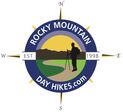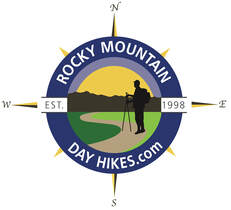|
Notes from the
Trail |
|
by Karen McPherson Editor’s Note: This is the story of Gene Kiernan and his attempt to climb Longs Peak at the age of 87. It is a story of how experience, preparation, physical conditioning, and planning are the keys to creating a successful backcountry trip… and it still may not be enough. Our thanks goes out to the Kieran family for sharing their story with writer Karen McPherson. ------------------------ The Oldest Man to Climb Longs Peak: Col. Butler’s 1926 Record Challenged by Gene Kiernan Reverend William “Col. Billy” Butler climbed Longs Peak on his 85th birthday, September 2, 1926. Billy climbed with two friends, Mr. and Mrs. Bob Leonard of Longmont. Coincidentally, Mr. Leonard was also celebrating his birthday, albeit only 30 years of age. At the time of his climb, Col. Billy was commander of his local post of the Grand Arm of the Republic, a fraternal organization for Union veterans who served in the American Civil War. He became a minister after completing his service (hence, “Reverend”). Col. Billy’s climb occurred during the summer climbing season, which typically runs from mid-July through early September. This is the most “approachable” time to climb Longs Peak, the tallest mountain in Rocky Mountain National Park standing at 14,259 feet above sea level. Col. Billy and his friends left from Longmont, camped the first night at the base of Longs Peak, and climbed up and back home in just under 46 hours. Col. Billy’s enduring record, having lasted–so far–for 98 years, is a testament to his feat of sportsmanship. Col. Billy felt, “fit as a fiddle.” Nearly 100 years later, so did Gene Kiernan. One can assume Kiernan is not the only octogenarian to challenge Col. Billy’s record, but his story is available and should be told to the advantage of others in pursuit of this formidable mountain. Gene Kiernan climbed Longs for the first time at 65 years of age. He is a self-described “compulsive goal-setter.” He ran his own company as an architect and builder. He is a road bike warrior: biking from Canada to the Gulf, throughout France, and across 28 of the United States. He is no stranger to training, preparation, and determination. He attempted a solo climb of Longs Peak last summer at 86 years of age but was turned away at Granite Pass by an electrical storm. Determined to try again, a RMNP ranger at the trailhead gave him tips and encouraged him to assemble a team. Learning of Col Billy’s 98-year-old record motivated him to call in his A-team. This A-team included his friend Steve O’Conner, an iron-man athlete who had climbed to the base of Everest, completed the Annapurna circuit, and submitted five 14’ers; O’Conners wife, Carol, self-described “sherpa”; and friend Charlie Scarlett, Gene’s road biking comrade for 20 years and whose resume includes hiking Kilimanjaro. “Team Geno” also included his two children: Steve, an elite triathlete, and his daughter, Kelly, who regularly climbs 13ers near her home in Pagosa Springs, CO, and the youngest of the group at 50 years of age. A fit and qualified team. Gene was the captain of the ship. He had arranged and shopped for a week’s worth of meals, made sure everyone arrived in time to acclimate and led a practice hike to Chasm Lake and Granite Pass. Team Geno may have signed up with mixed sentiments of obligation and adventure, but they were unanimously inspired to physically and emotionally support Gene’s admirable quest. His children especially wanted to be part of their father’s achievement. On the day of the hike, Steve and Gene set off at 7 am, allowing Gene to “take his time.” Kelly, Charlie, and the O’Conners left about an hour and a half later, knowing they could travel faster and set up camp. Gene was to carry an abnormally light pack of water, snacks, and rain gear. The rest of the team carried their own gear, shared supplies for the group, and absorbed the rest of Gene’s gear. They all carried approximately 30 pounds, except for Steve, who had the largest and heaviest pack. Rain was predicted and everything could be wet. They planned to camp at the Boulderfield, six miles from the trailhead and at an elevation of 12,760 feet. Once they went up through the Keyhole and around the Narrows, they could determine if the back side was frozen. If so, they would head back. A difficult decision, but not a hard one. If not, they planned to summit by 11 am and get back down before afternoon thunderstorms. All they needed was good weather. Unfortunately, Team Geno had the grave misfortune of a sideways hail storm in the Boulder Field. To compound the matter, they found themselves without the right gear and no food to speak of. Ultimately, it was Steve and Kelly who risked their lives to save a man who, despite his inexhaustible leadership, packed neither pants nor a cold-weather sleeping bag. Two steps forward, one steps back. Members of the group peeled off throughout the climb for various reasons. Charlie was driven, in part, by his own desire to climb Longs Peak at the age of 72, but found it a relentless challenge, especially with a 30-pound pack. Despite his will to continue, altitude sickness caused occasional staggering and unsure footing. He fell farther and farther behind and, at one point, almost fell over backward. In hindsight, he had forgotten his fleece jacket — a frigid mistake for a sleepover in the Boulderfield. He made the wise decision to turn back. Unfortunately, he had the group’s stove in his pack. Kelly played the mountain goat, arriving first to ensure the group had safe campsites and filtered water. Unfortunately, by the time Gene reached the Boulder Field, there wasn’t time to set up his tent before the wind, rain, and sleet started. Kelly huddled with Gene in her tent while waiting out the first squall. The furious weather that night took its toll on Gene, even though Steve and Kelly offered him their clothes, a tent, body warmth, and a sleeping bag. He was dehydrated and presented signs of hypothermia. Meanwhile, the O’Conners couldn’t leave their tent in fear of freezing. They were cold and wet; they had one pair of dry socks and wet boots. They focused on surviving horrendous weather after a slow ascent, a late-in-the-day arrival to the Boulder Field, and no stove to make warm food. Steve O’Conner reflects, “We were all put at risk by poor decisions and oversight. It threatened my ability to summit and I very much feared Gene was going to perish that night. I was prepared to lift a body off the mountain. At one point, Kelly asked me to poke him with a stick to be sure he was still alive.” In the end, the group endured 6 dark hours of serious storms and no sleep as they shifted between frustration and fear. The decision to summit (or not). By morning, Steve reports, “Only three of the 15 people camping decided to summit. Our group was drained. We agreed no one would be shamed for deciding not to summit. Otherwise, we were making a risky climb even more dangerous. My respect for my dad increased when he agreed, showing he knew his limits. Since the decision was quick and unanimous, for me it went immediately from a team to a personal goal.” Steve decided to continue solo to the top. Some accountability for the unnecessary challenges presented in this climb lay with the five members of the A-team. There was no “buddy check” to ensure appropriate gear, or “plan B” for food. Someone did reason with Gene to rent walking sticks, though. So there’s that. The Benefit of Trying Together Team Geno experienced a mixture of relief, vulnerability, and letting go. The group celebrated the week spent together and felt the camaraderie and the shared mission were more rewarding than beating any record. Kelly holds an invaluable memory of hiking ten hours up the mountain with her father, chuckling about what they had gotten themselves into. The solitude and gratitude offered by such a vast, beautiful space have inspired her to plan her next backpacking trip. Charlie was pained that he had failed himself and Gene. He realized, though, that Gene’s goals were not his goals. He demonstrated how important it is to reshuffle priorities on the fly and, “make decisions that are better for me (at my age) and my family.” However, he was left with a nagging thought that if they had attempted to climb Longs Peak in one day with light packs, they just might have made it… Steve summited Longs. He walked away with a keen sense of individual achievement and confidence in his willpower. Gene was grateful, uncharacteristically tearful even, once the group was back together safely. His career in architecture allowed him to work in teams and build great things, “but that was all brick and mortar. This is feelings and admiration.” As Gene trekked up and down the mountain, climbers asked, “Are you the one attempting to break the record?” They recognized and celebrated his perseverance. Way to go! Gene’s tenacity to produce a team in pursuit of his goal and his training alone (walking 15 miles a day for a year) was no small feat and can not be overlooked. And what were most other 87-year-olds doing on August 19th? Gene should be proud of his vim and vigor. May we all set goals way-up-high-in-the-sky. Longs Peak Trivia
Things to consider:
https://en.wikipedia.org/wiki/Abner_E._Sprague https://www.coloradohistoricnewspapers.org/?a=d&d=TDT19260903-01.1.1&e=01-06-1926-31-12-1926--en-20--1--img-txIN%7ctxCO%7ctxTA-%22william+butler%22-------2-Boulder----- https://www.nytimes.com/1926/10/03/archives/aged-veteran-scales-a-peak-william-butler-at-85-has-a-strenuous.html https://en.wikipedia.org/wiki/Longs_Peak
0 Comments
Leave a Reply. |
"The wild requires that we learn the terrain, nod to all the plants and animals and birds, ford the streams and cross the ridges, and tell a good story when we get back home." ~ Gary Snyder
Categories
All
“Hiking -I don’t like either the word or the thing. People ought to saunter in the mountains - not hike! Do you know the origin of the word ‘saunter?’ It’s a beautiful word. Away back in the Middle Ages people used to go on pilgrimages to the Holy Land, and when people in the villages through which they passed asked where they were going, they would reply, A la sainte terre,’ ‘To the Holy Land.’ And so they became known as sainte-terre-ers or saunterers. Now these mountains are our Holy Land, and we ought to saunter through them reverently, not ‘hike’ through them.” ~ John Muir |
© Copyright 2025 Barefoot Publications, All Rights Reserved






